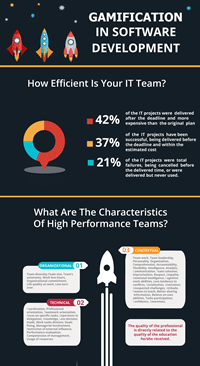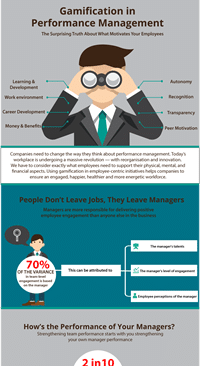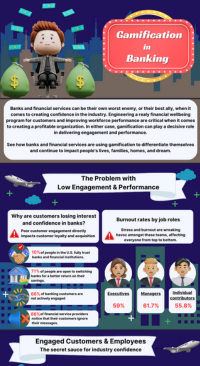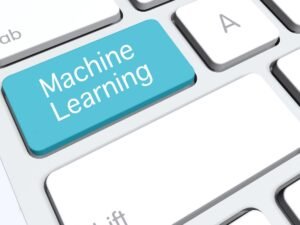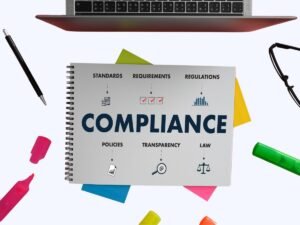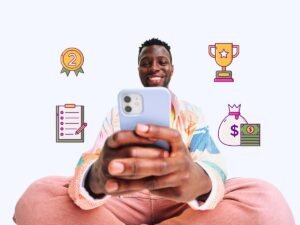Gamification in Learning Infographic

Share the Gamification in Learning Infograhic On Your Site
Copy and paste the code below on your site to embed the gamification in learning infographic
<strong>Please include attribution to https://mambo.io/ with this graphic.</strong><br>
<a href="gamification-learning-infographic?utm_source=mambo_embed&utm_medium=infographic&utm_campaign=gamification_learning"><img src="/s/img/wp-content/uploads/2024/03/Gamification-in-Learning-Infographic.png" alt="Gamification in Learning Infographic" width="800px" border="0" loading="lazy" style="background-image:url('data:image/gif;base64,R0lGODlhAgAEAKIAANTSvNze3OTm7NzazNze5AAAAAAAAAAAACH5BAEAAAUALAAAAAACAAQAAAMGCBNBQiQBADs=');background-repeat:no-repeat;background-size:cover" onload="this.style.removeProperty('background-image')"></a>
Gamification In Learning Infographic
Gamification in learning and development (L&D) can be your most potent tool in supporting your employees. The way organisations train and onboard employees matters, especially in this competitive business landscape. These two processes are crucial in ensuring that they’ll perform optimally in the foreseeable future.
But let’s be real: keeping your employees engaged in their L&D is easier said than done. With this in mind, how do you keep up with the businesses which are successfully leveraging learning? The answer is quite simple: gamification in learning.
The challenge in today’s learning and development landscape
Most employees nowadays will grab every opportunity available to improve their skills and advance their careers. Unfortunately, those opportunities aren’t always available, even if it’s the responsibility of their organisation to provide it to them. Many actually find themselves trapped between wanting to grow and feeling stuck due to a lack of available learning resources.
Such a level of disconnect can significantly affect the morale of your employees. Not only that, it inhibits your organisation’s potential for growth. Now, let’s take a quick look at the numbers showing how the lack of L&D opportunities affect employees.
- 59% of employees say more training boosts their performance.
- 74% of employees feel underperforming at work due to limited development chances.
- 39% of employees in the U.S. see growth potential as key to job satisfaction.
- 43% of employees find the training they receive ineffective.
- 76% of millennials rank professional development as a top company culture element.
Why is effective learning important?
Effectively planned training programs can ensure that your employees are sharp and efficient. However, doing so can be difficult, considering how workplaces nowadays are populated with four different generations.
- Gen Z (1997-2012) – The tech-savvy professionals who are seeking meaning and impact while demanding flexibility.
- Millennials (1981-1996) – The professionals who value work-life balance, face-to-face interactions, and collaborations that crave back and growth opportunities.
- Gen X (1965-1980) – The independent professionals who value stability but adapt to change when needed.
- Baby Boomers (1946-1964) – They’re dedicated, dependable professionals who prefer strict hierarchies and often find technology challenging.
These generational differences make it difficult for companies to adopt an effective learning method that meets everyone’s needs. These days, implementing diverse learning methods isn’t just a nice-to-have anymore. It’s a strategic “must-have” that can significantly impact an organisation’s ability to execute its strategy effectively.
The importance of effective learning in the workplace
Here are some related statistics showing why effective learning is essential in the workplace.
- 76% more best-in-class companies deliver learning in different ways than all others.
- 69% is how likely an employee will stay with the company for at least three years when they experience a positive and engaging onboarding process.
- Companies focusing on L&D to address employee knowledge gaps have seen profit boosts of 14% to 29%.
- Teams that have undergone comprehensive training are 10% more productive.
How to ensure successful learning
Ensuring the efforts you’ve applied to your company’s L&D leads to success can be challenging, but it is doable. One of the best ways to do so is remembering the 70/20/10 model, a popular formula used to train professionals optimally. When applied correctly, gamification in learning can leverage this model to effectively transform your workforce.
How does the 70/20/10 model work?
This popular L&D model states that:
- 70% of learning happens on the job, through handling real-world tasks and figuring out solutions to problems.
- 20% of learning is derived from interactions, feedback, mentoring, and working alongside peers and role models.
- 10% of learning happens through formal training and education.
The effectiveness of this model lies in its holistic and integrated approach to learning. It caters to varied ways employees absorb and apply new information. It’s also a scalable model that applies a blended learning approach to create a more engaging and comprehensive learning experience. More importantly, it provides a sense of autonomy so employees can directly see the impact of their decisions and actions.
Interesting memory facts you need to know
When locking in new knowledge and skills, how we learn is just as important as what we learn. Here are some interesting insights into the process of learning:
- Learners who used spaced repetition as their study method scored an average of 70% on their exams.
- Frequent and active training reinforces learning. Linking new information to known concepts makes it stick longer, and regular reviews and memory tests strengthen recall.
- People usually lose track of about 70% of new information in just a day.
- When engaged in gamified learning by doing the task themselves, students can retain up to 90% of the information.
- 67% of students find that gamified learning is more fun and keeps them more motivated than traditional classes.
- Students tend to perform 89.45% better with challenged-based gamification than traditional lecture methods.
12 Benefits of using gamification in learning
Let’s look at the top benefits of using gamification in learning.
- Digital training is ideal because it is available 24/7.
- Ensure learner’s interest and participation.
- Improve knowledge absorption and retention.
- Reinforce important lessons and behaviours.
- Keep track of a learner’s progress.
- Speed up the learning curve.
- Clear learning pathways.
- Improve learning visibility with progress indicators.
- Personalise student or professional development.
- Increase learner’s ownership over their learning.
- It makes eLearning fun and interactive.
- Scalable for any number of employees.
Who uses gamification in their learning & development?
Several leading companies have already realised the potential of gamification once applied to their corporate training processes. Here, let’s take a closer look at the big-name organisations that have seen what gamification in learning is all about.
Microsoft
Microsoft has integrated gamification in various ways, particularly in cybersecurity training. They’ve partnered with Circadence to create Project Ares. It’s a gamified learning platform designed for cybersecurity professionals at all levels. It incorporates elements such as experience points, skill badges, and work role achievement certificates, mirroring game-like achievements to motivate learning.
Deloitte
Deloitte created the Deloitte Leadership Academy (DLA), a unique training program for their employees and clients. It uses gamification principles to draw participants in. As a result, more users began returning weekly, spending more time and completing more courses.
Cisco
Cisco’s gamification strategy within its Social Media Training Program has significantly boosted employee learning and engagement. This innovative approach breaks down the program into three main certification levels – Specialist, Strategist, and Master. Additionally, the program is diversified with sub-specialisations for roles like HR, sales, and marketing, directly aligning skills with job functions.
Salesforce Trailhead
Salesforce Trailhead gamifies learning to enhance user engagement with Salesforce products. It offers video tutorials, challenges, and real-world tasks, rewarding progress with badges and points. This approach keeps learning exciting and motivates users to continue advancing their skills.
Google significantly improved their travel expense compliance by gamifying the submission process. Employees get an allowance per trip location, and they get to decide where the unspent money goes. Should they add it to their paycheck, save it for future trips, or donate it to charity? This gamified approach led to all employees meeting the submission deadlines within six months after the program started.
